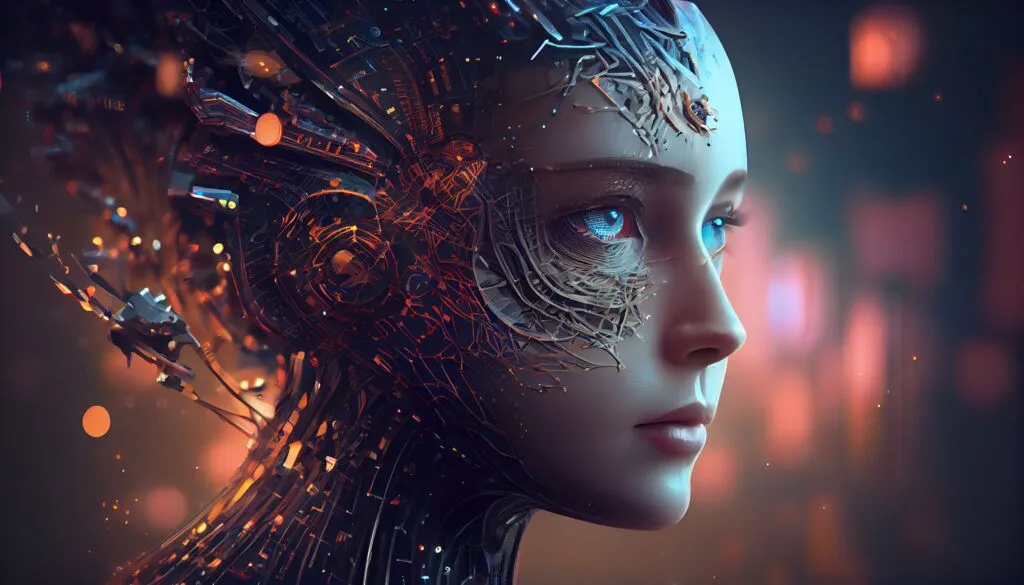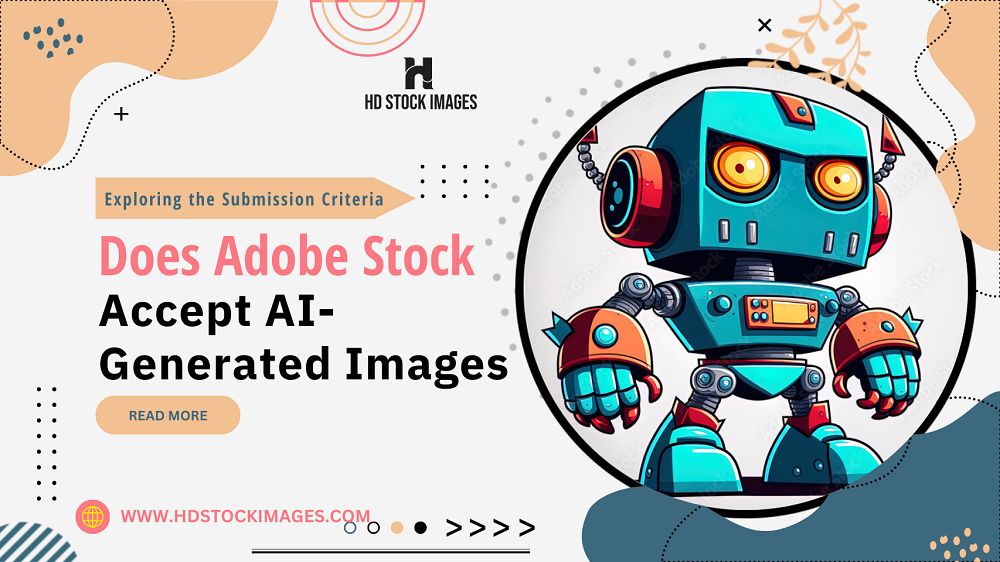1. Introduction
In today's rapidly evolving world of digital content creation, the intersection of artificial intelligence (AI) and visual arts has given rise to new possibilities and challenges. One platform that stands at the forefront of this landscape is Adobe Stock, a prominent player in the stock photo industry. As the creative community continues to explore the boundaries of AI-generated content, a pertinent question arises: Does Adobe Stock accept AI-generated images? In this blog post, we delve into the intricate submission criteria of Adobe Stock, aiming to uncover whether AI-generated images can find their place within its expansive collection. From technical specifications to aesthetic standards, copyright considerations to the broader implications for creativity, we embark on a journey to understand the evolving relationship between AI and one of the leading platforms for visual content. Join us as we navigate the intriguing terrain where technology meets creativity and explore the potential impact on the future of stock imagery.Also Read This: Mastering Behance for Beginners – A Comprehensive Guide to Platform Features
2. Understanding Adobe Stock Submission Criteria
 As a hub for creative professionals seeking high-quality visual assets, Adobe Stock maintains stringent submission criteria to ensure the integrity and marketability of its content. To determine whether AI-generated images can pass the litmus test, let's break down the key factors that contribute to successful submissions:
As a hub for creative professionals seeking high-quality visual assets, Adobe Stock maintains stringent submission criteria to ensure the integrity and marketability of its content. To determine whether AI-generated images can pass the litmus test, let's break down the key factors that contribute to successful submissions:Quality and Technical Requirements
Resolution and Size Specifications: Adobe Stock demands images with sufficient resolution and size to accommodate various usage scenarios without compromising quality.Image Formats and Compression Guidelines: Specific formats and compression settings are essential to maintain image fidelity while reducing file sizes for efficient distribution.Focus, Clarity, and Lack of Noise: Images should exhibit sharpness, clarity, and minimal noise, ensuring they are visually pleasing and meet professional standards.Content Guidelines
Relevance and Market Demand: Submissions must align with current market trends and cater to the needs of a diverse customer base.Intellectual Property Considerations: Adherence to copyright and trademark laws is crucial. Images should not contain copyrighted logos, brands, or materials without appropriate permissions.Editorial vs. Commercial Content: Clear distinction between editorial and commercial content is necessary. Images featuring recognizable individuals or private property may require model and property releases.Model and Property Releases
Importance of Releases: When AI-generated images include identifiable individuals or private property, obtaining signed model and property releases is vital to ensure legal compliance.Challenges with AI-Generated Faces: AI-generated faces might blur the lines of privacy and consent, prompting a reevaluation of traditional release mechanisms.Aesthetic and Artistic Standards
Composition, Creativity, and Originality: Adobe Stock seeks images with strong composition, creative perspectives, and distinctive originality that stand out in a competitive market.Avoiding Clichés and Overused Concepts: AI-generated content might inadvertently replicate popular visual tropes. Maintaining a level of uniqueness can be a challenge.Navigating these criteria demonstrates Adobe Stock's commitment to maintaining a curated collection of high-quality, legally compliant, and artistically compelling content. The question now becomes whether AI-generated images can meet these demanding standards, paving the way for a discussion on the benefits and complexities of incorporating AI into the creative landscape.Also Read This: Why Creative Agencies Depend on Imago Images for Successful Campaigns
3. AI-Generated Images: The Submission Dilemma
 As technology continues to push the boundaries of creative expression, the emergence of AI-generated images brings both promise and perplexity to the world of stock content. Let's delve into the heart of the matter by examining the multifaceted aspects of the AI-generated image submission dilemma:
As technology continues to push the boundaries of creative expression, the emergence of AI-generated images brings both promise and perplexity to the world of stock content. Let's delve into the heart of the matter by examining the multifaceted aspects of the AI-generated image submission dilemma:Discussion on AI's Role in Content Creation:
AI's Evolution in Creativity: Explore the evolution of AI from basic automation to sophisticated content generation, touching on its role in aiding and sometimes even supplanting human creativity.Creative Collaboration: Discuss the potential for AI-human collaboration, where AI tools can serve as a muse, providing inspiration and new ideas for artists.Advantages of AI-Generated Images:
Efficiency and Scalability: Highlight the efficiency gained through AI-generated images, which can produce a high volume of content in a fraction of the time it takes for human artists.Innovative Styles and Concepts: Showcase the ability of AI to explore innovative visual styles and concepts that might be challenging for human artists to envision.Challenges of AI-Generated Images:
Maintaining Human Touch and Emotion: Examine the potential lack of emotional depth and nuanced storytelling in AI-generated images, which often draw from existing datasets.Uniqueness and Avoiding Template-like Outputs: Address concerns about AI-generated images inadvertently becoming formulaic or repetitive, potentially diluting the authenticity of the creative process.The submission dilemma at its core prompts us to contemplate whether AI-generated images possess the soul, emotional resonance, and artistic identity that human-created content carries. As AI continues to redefine creativity, striking a balance between technological efficiency and artistic integrity becomes pivotal. In the realm of stock imagery, the debate gains further complexity when considering Adobe Stock's commitment to maintaining a collection that meets their stringent criteria. In the next section, we explore Adobe Stock's official stance on AI-generated content, shedding light on their perspective and practices.Also Read This: Shutterstock’s Top Selling Images of 2022: Examining the Trendsetters and High Performers
4. Adobe Stock's Position on AI-Generated Images
Understanding how Adobe Stock views the integration of AI-generated images into its platform provides valuable insights into the evolving landscape of creative content. Let's delve into Adobe Stock's official stance, as well as practical examples and case studies that illuminate their position:Official Guidelines and Policies:
Explore Adobe Stock's documented guidelines and policies related to AI-generated content submissions.Highlight any specific requirements or recommendations provided by Adobe Stock for contributors who wish to submit AI-generated images.Case Studies or Examples:
Showcase examples of AI-generated images that have successfully made their way onto Adobe Stock's platform.Discuss how these images align with Adobe Stock's existing collection and whether they adhere to the platform's submission criteria.User Experiences and Insights:
Gather insights from contributors who have attempted to submit AI-generated images to Adobe Stock.Share their experiences, challenges faced, and lessons learned from the submission process.Understanding Adobe Stock's perspective on AI-generated content can shed light on the practicalities of integrating this type of content into a platform that emphasizes quality and creativity. By exploring the presence of AI-generated images on Adobe Stock, we gain a deeper understanding of the platform's openness to innovation and its approach to navigating the intersection of AI and artistry. In the following section, we delve into the copyright considerations that arise in the context of AI-generated images submitted to stock platforms.I put some AI-generated images up on Adobe Stock for sale. Properly tagged as AI generations, yes. Is this a good idea? Will any of them sell? Does any of this make any sense? Who knows? I will, eventually. pic.twitter.com/eh02dwrXP7
— Roope Rainisto (@rainisto) December 17, 2022
Also Read This: How to Cite Getty Images: Proper Citation Methods for Getty Content
5. AI-Generated Images and Copyright Considerations
The rise of AI-generated images introduces intricate challenges within the realm of copyright law and intellectual property rights. As we explore the landscape where technology and creativity intersect, it's essential to delve into the complex copyright considerations associated with AI-generated content:Ownership of AI-Generated Content
Define the legal nuances surrounding ownership of AI-generated content, considering the role of the AI tool and the human creator.Discuss potential implications for copyright ownership and whether AI-generated content can be attributed to the AI tool, the developer, or the user.Legality of AI-Generated Work and Copyright Disputes
Examine potential legal disputes that may arise when AI-generated content resembles existing copyrighted works.Explore scenarios where AI-generated images inadvertently infringe upon copyrighted material, leading to legal challenges.Importance of Providing Proper Attribution
Highlight the significance of transparently attributing the use of AI tools in generating creative content.Discuss ethical considerations and how providing attribution contributes to maintaining the integrity of the creative process.Navigating copyright considerations in the context of AI-generated images requires a delicate balance between technological advancement and upholding the rights of content creators. The challenges of determining ownership and the potential for copyright disputes underscore the need for clear guidelines and legal frameworks as AI-generated content becomes more prevalent on platforms like Adobe Stock. In the subsequent section, we delve into practical strategies for navigating the submission process for AI-generated images while ensuring compliance with submission criteria.Also Read This: Securing a Contract with Adobe Stock
6. Navigating the Submission Process for AI-Generated Images
| Step | Description |
| 1. | Preparing Images: Ensure AI-generated images meet Adobe Stock's technical requirements for resolution, size, and format. |
| 2. | Demonstrating Uniqueness: Emphasize originality and creativity in AI-generated submissions to stand out from potential template-like outputs. |
| 3. | Addressing Model and Property Releases: If AI-generated images feature recognizable individuals or private property, consider obtaining model and property releases for legal compliance. |
| 4. | Crafting Captions and Keywords: Write accurate and descriptive captions and keywords to aid discoverability and relevance of AI-generated images. |
| 5. | Reviewing Content Guidelines: Ensure AI-generated images align with Adobe Stock's content guidelines, avoiding copyrighted logos and trademarks without permissions. |
| 6. | Ethical and Legal Considerations: Transparently disclose the use of AI tools in generating the images, providing attribution where necessary. |
| 7. | Submitting for Review: Upload AI-generated images to Adobe Stock's platform, adhering to their submission process. |
| 8. | Quality Assurance: Verify that AI-generated images meet the platform's quality standards in terms of clarity, focus, and noise reduction. |
| 9. | Model and Property Releases (if applicable): If releases are required, ensure they are provided and accurately completed. |
| 10. | Awaiting Review and Feedback: Allow time for Adobe Stock's review process. Be prepared to address any feedback or revisions required. |
| 11. | Publication and Licensing: If approved, AI-generated images become part of Adobe Stock's collection and are available for licensing by users. |

 admin
admin








